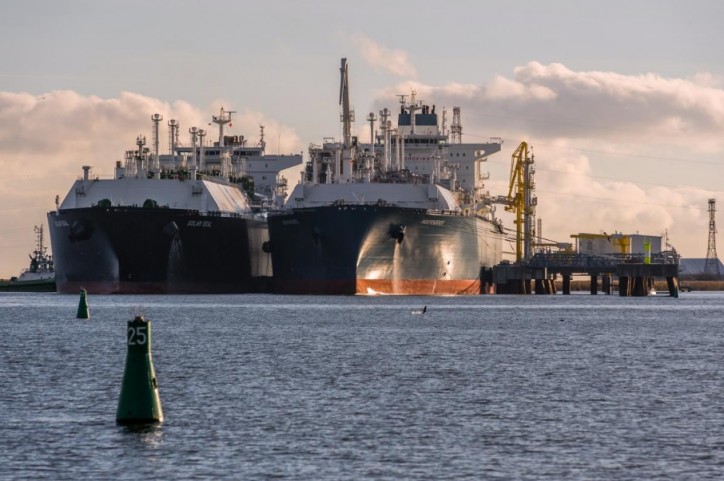Three of five LNG storage tanks designed for an LNG reloading station at the port of Klaipėda have been shipped from Chart Ferox, a.s., the Czech manufacturer of LNG tanks. The project of the LNG reloading station is implemented by the operator of oil products and liquefied natural gas terminals KN (AB Klaipėdos Nafta).
Due to their mega-size, each of the storage tanks was shipped separately. It took about 16 hours to reload and transport a single tank from Chart Ferox to a barge waiting at the Elbe River. The transportation of the three tanks took about three days. Now LNG tanks are being shipped by individual barges to the port of Hamburg, where they will be loaded onto a sea cargo carrier and sailed through the Baltic Sea to the port of Klaipėda.

LNG carriers at Klaipeda LNG Terminal - Image courtesy of KN (for illustrative purposes only)
It is planned that the three of five LNG tanks will arrive at the port of Klaipėda in mid-March. The two remaining tanks, which will be transported via the same route, will arrive from the Czech Republic at the beginning of the summer.
“Having followed this complex reloading operation and witnessed that the first LNG tanks were successfully and timely loaded onto a barge, we are convinced that the project is being implemented according to schedule. It is very important that the world’s leading manufacturer of LNG tanks and distribution equipment Chart Ferox, a.s is taking part in the project. This means that we are supplied with high quality LNG storage tanks which will be safely shipped to the port of Klaipėda in due time. When the LNG distribution station is put into operation, the port of Klaipėda will become the LNG hub for the Baltic countries and north-eastern Poland,” said Acting CEO of KN Marius Pulkauninkas.
As KN strives for the smooth implementation of this project, KN engineers were involved in the process of the transportation of LNG tanks to ensure the safety and quality of this process.
About 250 tonnes of steel was cut into pieces and used for the manufacturing of a single LNG tank. So, one tank weighs almost as much as the steel used for its production. Some of technological equipment has already been installed on the LNG tanks, which underwent special hydraulic and technological tests before transportation.
The tests of equipment are carried out after the completion of all engineering, construction and production works to make sure that a customer is supplied with high quality tanks.
The LNG reloading station is aimed at creating a small-scale LNG operational infrastructure and developing the LNG market in the Baltic Sea region. The station will be comprised of LNG tanks with a total capacity 5 000 m3. Gas from the floating LNG storage and regasification unit Independence will be delivered to the storage tanks by a gas tanker and distributed by road tank trucks or vessels. There are plans to expand the LNG station’s capacities up to 10 000 m3. The LNG station will be equipped with two truck filling stations and will be accommodated for reloading LNG onto LNG carriers.
Source: Klaipeda Nafta